Stade De France: France
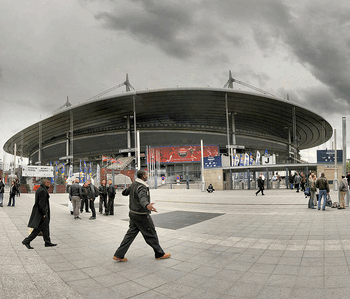
Panoramas / Flickr.com
The Stade de France has been the home of the French National team since 1998. Interestingly, France didn’t have a national stadium until then, with discussions surrounding the importance of one coming about after France were selected to host the 1998 FIFA World Cup. The decision to build the Stade de France was the first time in more than 70 years that a stadium was built in France for a specific reason since the Stade Olympique Yves-du-Manoir was built for the 1924 Summer Olympics.
Whilst it was being built the stadium was referred to as the Grande Stade, with the French Ministry of Sport launching a competition to come up with an official name for the stadium in 1995. The Stade de France was was a name proposed by the French football legend Michel Platini. It was officially inaugurated on the 28th of January 1998 when France played Spain in front of 78,368 and Zinedine Zidane scored the only goal.
Stats
| Stade De France Stats | |
|---|---|
| Year Opened | 1998 |
| Capacity | 81338 |
| Average Attendance | 78432 |
| Record Attendance | 80832 (Guingamp v Rennes (2009)) |
| Pitch Size | 105 x 70 (7350) |
| Former Name | Grand Stade |
| Owner | Consortium Stade de France |
| Clubs Hosted | France national football team, France national rugby union team, Stade Français, Racing Métro 92 |
| First Fixture | France v Spain (28/01/1998) |
| France Stats | |
|---|---|
| Year Founded | 1904 |
| Nickname | Les Bleus (The Blues), Les Tricolores (The Tri-colors) La Sélection (The Selection) |
| Rivals | England, Germany, Italy |
| Previous Stadiums | Stade Olympique Yves-du-Manoir, Parcs des Princes |
| Kit | Blue and White (Home) / White & Blue (Away) |
| Training Ground | Clairefontaine |
| Team Owner | French Football Federation |
| Record Goalscorer | Thierry Henry (51) |
| Record Appearances | Lilian Thuram (142) |
Stade De France Photos
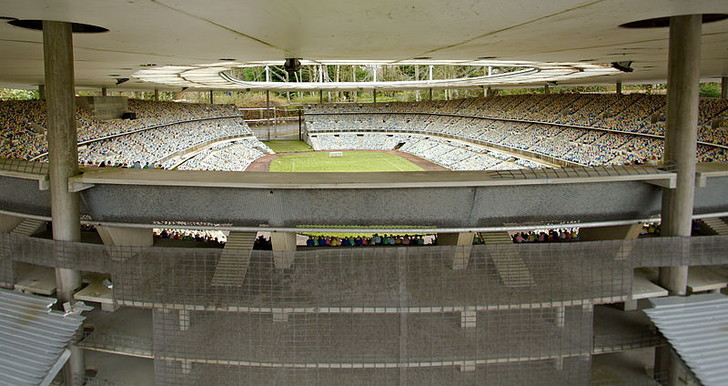
By Frédéric BISSON from Rouen
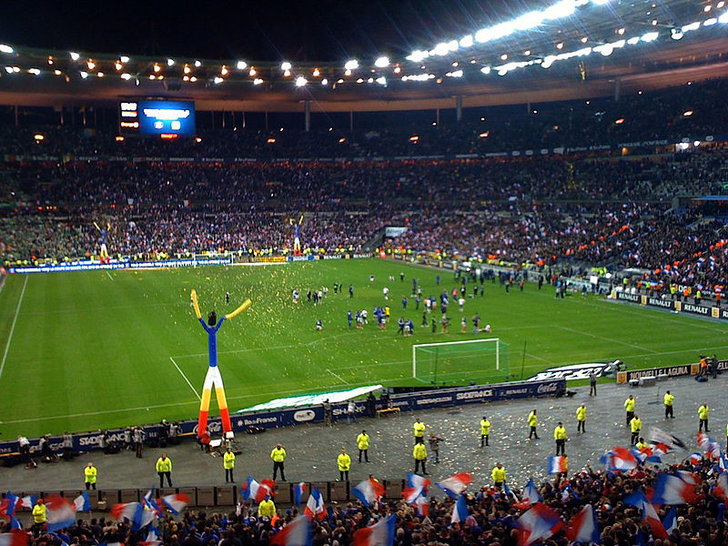
By Julien Menichini (Flickr: France - Irlande) [CC BY 2.0]
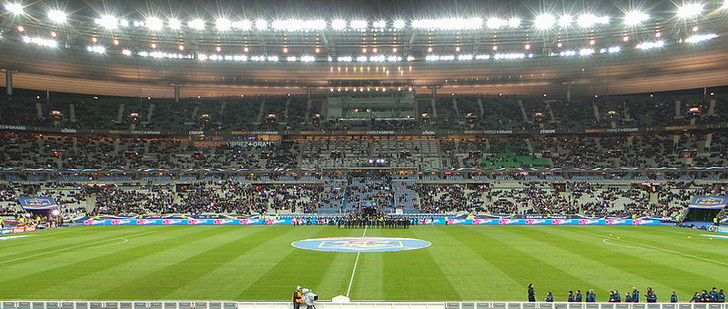
By Poudou99 / aka Kootshisme (Own work) [CC BY-SA 3.0]
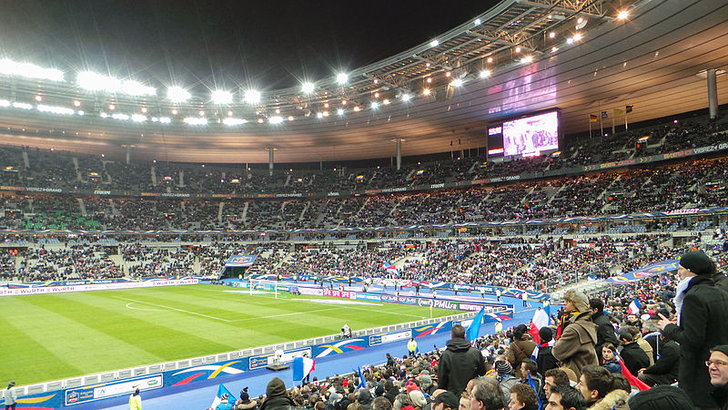
By Poudou99 / aka Kootshisme (Own work) [CC BY-SA 3.0]
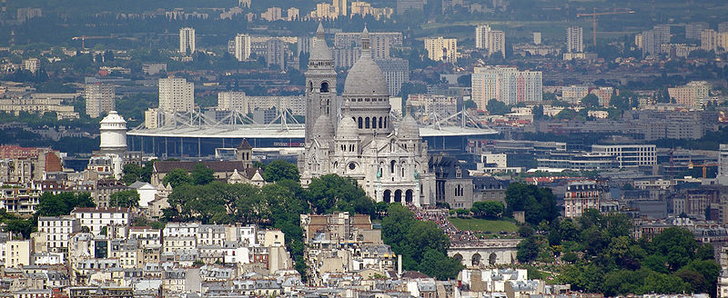
By Kirua (Own work) [Public domain]
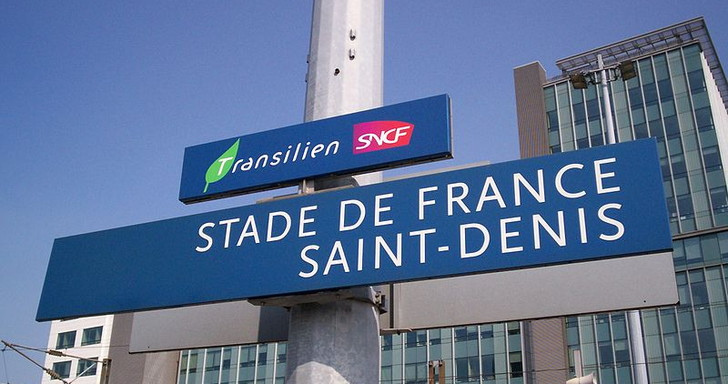
Stade De France Seating Plan and Where to Sit

The Stade de France has a bowl design that is now common place in newly built stadiums. It has three tiers and a running track that goes around the pitch. The stands can move in and out in order to bring the spectators closer to the action, however. The most expensive tickets are located around the halfway line of the upper and lower tiers.
All three tiers are covered, though if you sit in the lowest tier and the wind is blowing in the wrong direction when it’s raining then you might get slightly wet. There are still four stands in the ground as far as the naming of the stadium is concerned. They are named after the physical location of each stand so expect to be sat in the Nord, Ouest, Sud or Est stand. For those of you that aren’t too confident in your French those are the North, West, South and East stands of the Stade de France.
France Ticket Prices
The Stade de France is the home of the French rugby team as well as the nation’s football team. As such there are numerous events that take place at the stadium and each has its own pricing structure for tickets. You’ll pay more for tickets to a match at the Euros in the summer of 2016 than you will for a friendly game between France and Ireland, for example. There are no set ticket prices at the Stade de France, so your best bet is to keep an eye out for prices on the individual matches that you’re hoping to see. One thing that we can say is that matches are normally broken down into different categories, so there will be differently priced tickets for the various events held at the stadium.
How To Get France Tickets
The Stade de France’s official website is the best place to start if you’re looking for tickets to an event held there. You can also buy tickets for matches featuring the French National team on the French Football Federation’s website.
Where to Buy
Getting To Stade De France
The Stade de France is what the French Football Federation calls a ‘public transport destination’. That means that it is set-up to allow access more conveniently by the capital’s public transport system than by private transport.
train – The Suburban Rail Network in Paris is excellent, so if you’re looking to get to the Stade de France that’s the best way to do it. La Plaine Stade de France is about 4 minutes from Gare du Nord and just under 10 minutes from Châtelet. Stade de France – St Denis station, meanwhile, is 5 minutes from Gare du Nord and 9 minutes from Châtelet. You can also get the Metro Subway line 13 to St Denis – Porte de Paris station. That is about 15 minutes from Saint-Lazare station, 20 minutes from Invalides and 25 minutes from Montparnasse.
Getting to Paris itself by train is relatively easy. International services run from London, Brussels, Holland and Germany and they all arrive in Gare du Nord.
Bus – There is a very good bus network in Paris, with numerous services running towards the Stade de France. It isn’t the fastest way of getting there, though, so you’ll want to explore the train services or the tramway if speed is of the essence.
Car – Parisian drivers are famed for their…brave driving. You have to be a particular type of crazy to want to take them on! If you’re determined, though, then there are two motorways that run past the stadium, the A1 and the A86. If you’re on the A1 take exit 2, if you’re on the A86 then take exit 9.
By Air – Two main airports serve Paris: Charles de Gaulle and Orly. CDG is the closest the Stade de France and to the city itself. It’s also the biggest of the two airports and operates flights to and from cities like Belfast, Dublin, London, Birmingham and Edinburgh. Orly is situated to the South of the city and is served by flights from London, Milan, Naples, Southampton and from across France itself.
There is a third airport that serves Paris, though it is about an hour and 15 minutes away from the centre of the city so it is mostly used by budget airlines. Beauvais is the choice destination for the likes of Ryanair and Easyjet. Dublin, Glasgow, Venice and Marseille are all cities that have flights that arrive in Beauvais regularly.
Taxi – Much like driving your own car, it is recommended that you avoid getting a taxi to the Stade de France as it’s easier and cheaper to get public transport. If you do want to jump a taxi then how much you’ll pay depends on where you’re getting it from. A taxi from Gare du Nord to the stadium, for example, is likely to set you back about €15 and will take just over 20 minutes.
Parking Near Stade De France
Parking near to the ground is limited to say the least. There are car parks near to the stadium that you can use if you have bought a parking ticket in advance, but parking around the stadium on private roads is unlikely.
Useful Resources
Stade De France Hotels
Paris is, of course, France’s capital city so the number and quality of hotels is exactly as you’d expect. We’ve picked out a few specific locations for you, though, just in case you want a bit of guidance about where to stay.
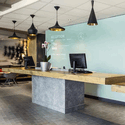
ibis Saint-Denis Stade Ouest - £35+
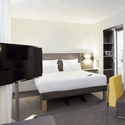
Novotel Suites Paris Stade De France - £61+
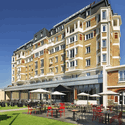
Executive Hotel Paris Gennevilliers - £76+
Pubs and Bars Near Stade De France
The city of love has some wonderful bars and restaurants for you to head to for a pre-match drink. There are hundreds, if not thousands, of places to go so we couldn’t possibly list them all. Instead we’ve picked out a few of our favourites for your perusal.
The Frog & Princess
The Little Temple Bar
The Eden Park
Facilities
As the national stadium of France that was built relatively recently it’s far to say that the facilities at the Stade de France are relatively excellent. You’ll find it a comfortable, clean place to go with vendors who can mostly speak English. It is somewhat bland, but you won’t be overly disappointed by your visit – unless your team loses, of course!
Hospitality
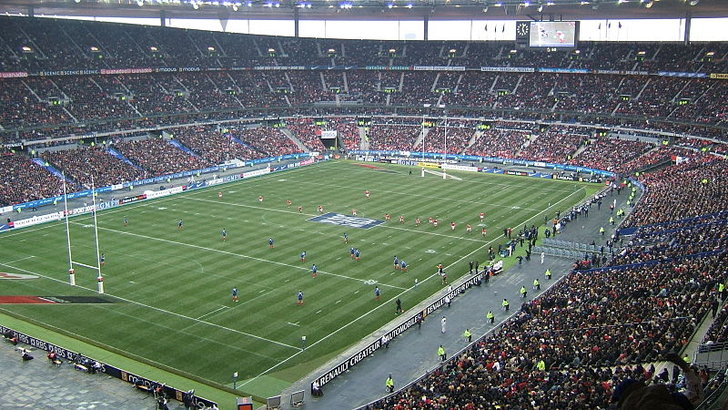
As the home of the French National teams in two different sports, the Stade de France has numerous hospitality packages that will entertain and delight even the most discerning football fan. There are VIP seats, for example, with access to the Colonnades Lounge. There you’ll get access to on-going buffets or fine-dining as well as access to champagne, wine, spirits and soft drinks. On top of that you’ll get a photocall, tasting sessions for food and drinks and entries into prize draws.
Another, more high-end, option is a private box. With this you’ll get VIP parking, a vintage wine menu, event-related foods such as birthday cakes, a la carte food and a special visitor for you and those in your box. This will normally consist of a visit from a relevant athlete for the sport you’ve gone to see.
Private Hire
There are numerous private hire options for the Stade de France at the time of writing, but if you’d like some more information then your best bet is to get in touch with the club directly.
Stadium Tours & Museum
The Stade de France has official tour guides who will lead you in the footsteps of all of the country’s sporting heroes. The tours last about an hour and during that time you’ll see the changing rooms, the pitch side area and you’ll get to have a look around one of the stands itself. The tour also takes in the museum at the stadium, a four-room permanent exhibition that contains numerous artefacts from France’s history.
Tours take place at different times in the summer and in the winter. During the summer they depart at 11am, 12pm, 2pm, 3pm and 4pm with English speaking tours at 10.30am and 2.30pm. In the winter they leave at 11am, 2pm and 4pm in both French and English. They cost €15 for adults, €12 for students, €10 for children and under 5s get in for free.
About France

Les Bleus played their first official match in 1904 and have enjoyed three ‘golden generations’ during their existence. France is one of only three teams in football to have entered every cycle of the World Cup and in 1958 a team led by Raymond Kopa and Just Fontaine finished third in that year’s iteration of the competition. It was just a sign of things to come, with Michel Platini leading the nation to a European Championship in 1984. France then went on to win the World Cup in 1998, becoming one of only six teams to win the competition whilst hosting it.
In 2000 France won the Euros once more and hit the top of FIFA’s World Rankings for the first time in their history. They went on to win the Confederations Cup in 2001 and again in 2003 and they made the final of the World Cup again in 2006. Sadly they went on to lose to Italy on penalties, bringing an end to France’s glorious run in the major international competitions.
It hasn’t always been plain sailing for the French National team. In the 2002 World Cup global football was stunned when France lost 1-0 to unfancied Senegal. They went on to suffer a goalless elimination from the first round of the competition and became only the second team to be eliminated at that stage whilst holders of the trophy. The 2006 loss was marred by the dismissal of France legend and the team captain Zinedine Zidane for a head butt on Italian Marco Materazzi.
Stade De France History
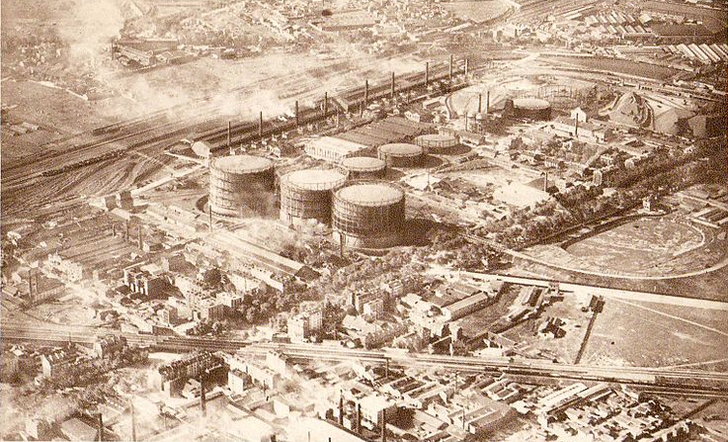
Before the building of the Stade de France there wasn’t a stadium in the country that was specifically dedicated to the national team. They used to alternate playing their games at either Le Parc des Princes, which is also in Paris, or the Stade Olympique Yves-du-Manoir in Colombes. They also occasionally played in the Stade Pershing, Stade de Paris and Stade Buffalo.
For a time the French national team toured the country, playing in venues like the Stade Marcel Saupin in Nantes, The Stade de Gerland in Lyon, the Stade de la Meinau in Strasbourg and the Stade Velodrome in Marseille. When Le Parc des Princes was renovated in 1972 a decision was made to move the team there permanently. It wasn’t until the nation was awarded the hosting of the World Cup in 1998 that a stadium dedicated to the national team was built, with the Stade de France opening just before the World Cup began.
With a capacity of 81,338, the Stade de France is the fifth-largest stadium in Europe. It has hosted Champions League finals, Rugby World Cup matches and the 2003 World Athletic Championships. It is the only stadium in the world to host the final of both the Rugby and Football World Cups. It also hosted the final of the 2016 European Championships, when the hosts were beaten 1-0 by Portugal.
Like most of the world’s major stadiums, Stade de France has hosted numerous musical acts. The Rolling Stones, U2, Beyonce, Coldplay, Lady Gaga, The Police, Madonna and Paul McCartney have all held gigs at France’s National stadium.
On November 13th 2015 the Stade de France was the victim of a terrorist attack. There were numerous such attacks throughout Paris at the same time, with the stadium chosen as the location for suicide bombers because of the match between France and Germany that was taking place at the time. Over a hundred people across Paris lost their lives in the tragedies, though it could have been much worse if not for the quick thinking of the security team around the stadium.
Future Developments
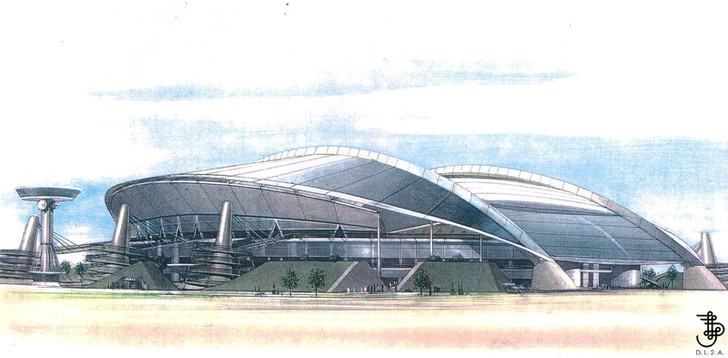
There are no immediate plans to develop the Stade de France, though the French National rugby team left for their own purpose built location, The Grande Stade FFR, when it opened in 2017.
